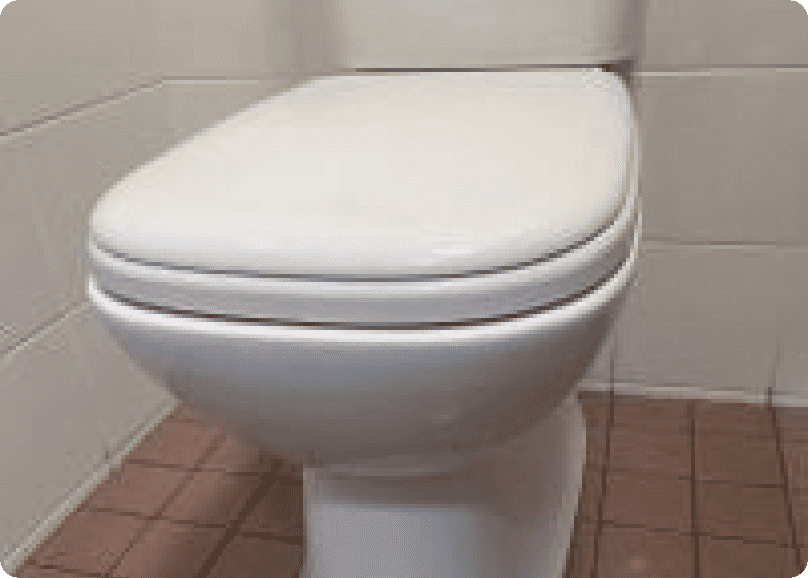3 Reasons Why Your Toilet Is Slow to Fill
- William Demirdonder
- Aug 02, 2021
- No comments
- 15-minute read

Is your toilet slow to fill once you flush? It’s a highly common plumbing issue that homeowners across Sydney tend to face on a daily basis. It’s also one of the most common calls a professional plumber will receive. There are various reasons why your toilet might be slow to fill in the first place. This article will help you understand why and could help you fix your toilet issue.
While most of the associated problems are easy to resolve or fix, still you should consider hiring a professional plumber to assist you in fixing your toilet slowly filling. The differences between a professional plumber and a handyman can be found here.
A professional, licenced plumber can help you in identifying the root cause of your toilet flushing problem. Once you have resolved the problem of toilet filling too slowly, you can easily make your toilet run seamlessly. Let us help you understand the main causes for it and how to deal with the same.
Once you flush the toilet, its tank is known to refill on its own. The speed of refilling usually depends on the pressure of water flowing through the supply lines in your home. In case you notice that the toilet is taking longer to refill, there could be some potential problems, either in the supply line or the plumbing line.
Some of the common reasons for toilet filling up gradually are:
The valve for supplying water is the knob-like structure that comes out of the wall located just underneath the toilet tank. The valve of the water supply is responsible for controlling the overall flow of water in the respective toilet tank. When the given valve is not functioning properly or partially closed, then it will not be capable of delivering an adequate amount of water supply to the toilet tank.
Another most common issue associated with the water supply valve is the accumulation of debris or minerals that restrict the overall flow of water. It would ultimately inhibit the filling speed of the tank through the valve.
To resolve the same, you can check the valve to ensure that it is open completely. In case the valve that is completely open is still not delivering the desired amount of water for refilling the toilet tank, then you can consider hiring services from a licensed plumber in Sydney to provide a reliable solution.
Your toilet could be slow to fill due to the valve tube. The fill valve component is attached to a device that is vertically shaped and appears like a tube. The given component is situated inside the toilet tank. The job of the fill valve setup is to control the water level in the toilet tank. With the passage of time, fill valves tend to wear down, get shifted out of place, or get clogged with debris or minerals.
If there is the presence of any of the given issues in the fill valve component, it could slow down the process of toilet tank refilling.
In case you are assured that there is no issue with the valve, you should closely inspect the fill valve area of the toilet tank. Look into the valve for potential signs of any damage or common wear and tear. You should also check into the right positioning of the fill valve in the tank.
Ideally, the fill valve should be positioned on the tank’s left side with its tailpiece extending through the tank’s bottom. It is here that the fill valve attaches itself to the shut-off valve or the water supply tube.
In the toilet tank, there is the presence of a float ball sitting right above the water surface. The main role of the float ball in the tank is to control the incoming flow of water into the tank. It does not allow the tank to get filled to the top to avoid overflowing.
In case the float ball in the tank becomes waterlogged, then it will not allow the water to fill effectively. This is the reason why it prevents the right amount of water from entering the tank. As a result, water will refill slowly into the tank.
To resolve this issue, you should begin by removing the lid of the toilet tank. Check the water level in the tank. If you observe that it is only partially filled with water or the float ball is not floating at the surface of the tank, then the float ball might be waterlogged.
The best part is that you can easily replace the float ball of the tank. Moreover, for optimal results, you can consider replacing the inner parts of the toilet with advanced, modern hardware units.
Malfunctioning floats or clogged fill lines are the main causes that affect the flow of water into your toilet tank. Some of the easy ways to correct the same are;
In addition to slow water supply in the water tank, you can also experience other plumbing issues like a blocked toilet. Here are some ways to prevent the same:
Whatever your plumbing issue, it is best to hire a licensed plumber who is a true local to attend your property and fix your issue. Professional plumbers are highly experienced and qualified and know it well to deal with common and complex plumbing problems on the go. For any plumbing related questions, please call Proximity Plumbing now on 0420 102 394.
Understanding your home insurance and what you are covered for when it comes to plumbing can be overwhelming. Do you have cover if the land mower of your neighbour damages part of your pipeline?....
Read MoreFatbergs are created when you flush down wet wipes or “flushable” wipes down the toilet and they get caught up in your pipes with a combination of any oils, fats or grease poured down the ....
Read MoreImagine you’re in the midst of a plumbing emergency (we’ve all been there) and you desperately need an ace plumber on your door step. We doubt in the middle of a plumbing emergency you&rs....
Read MoreIrrespective of how hard you try, sometimes a toilet or bathroom clog is unavoidable. Whatever might be the reason for the clog, you need to clear the same. When you wish to fix the problem, a plunger....
Read More



Leave a Reply
Your email address will not be published. Required fields are marked *